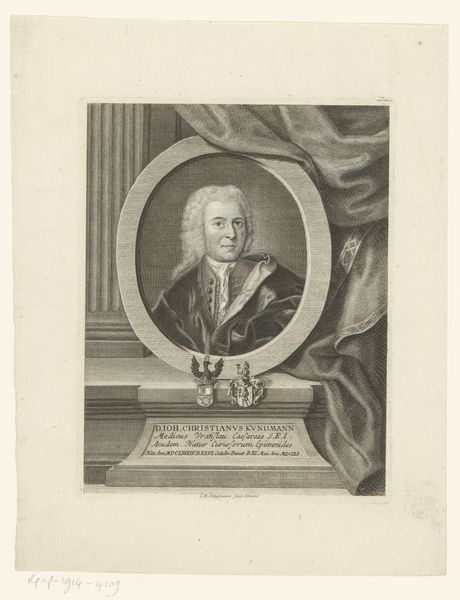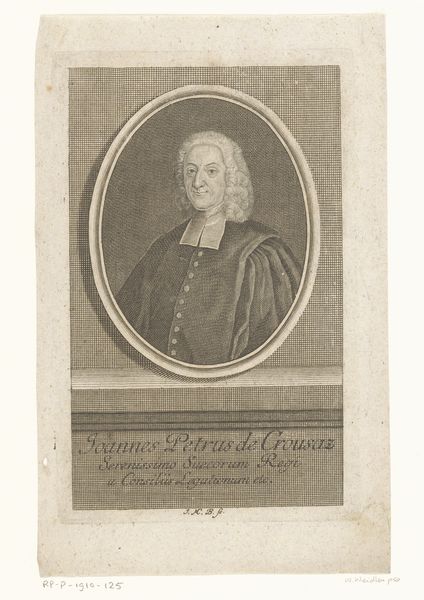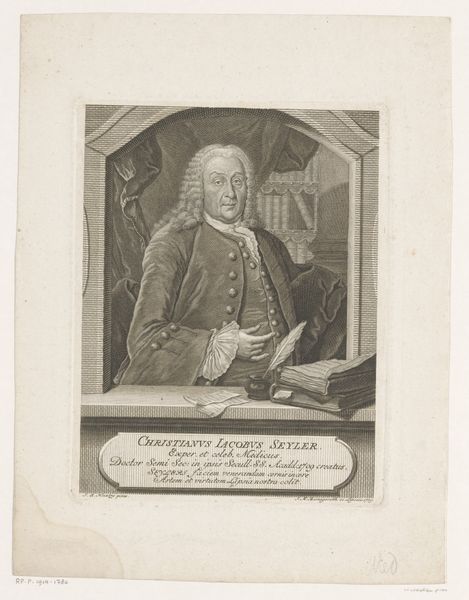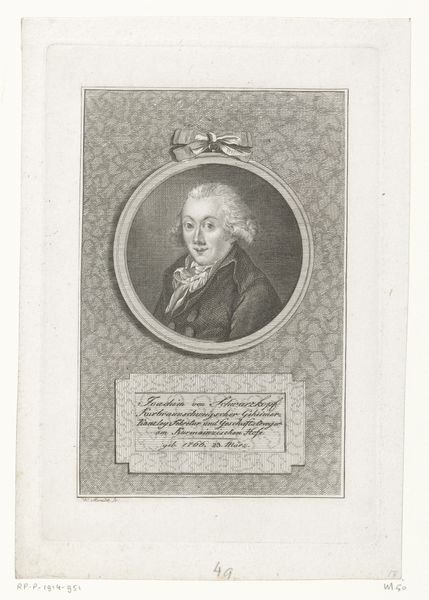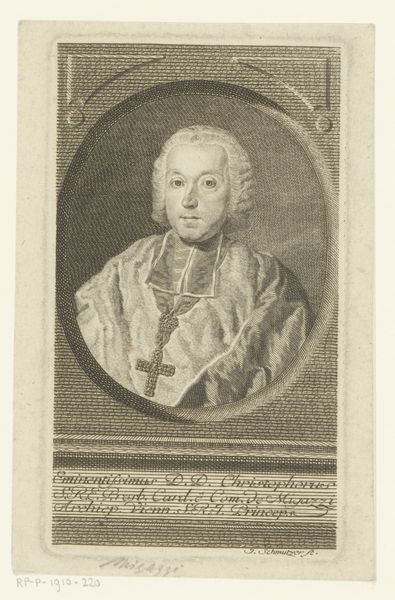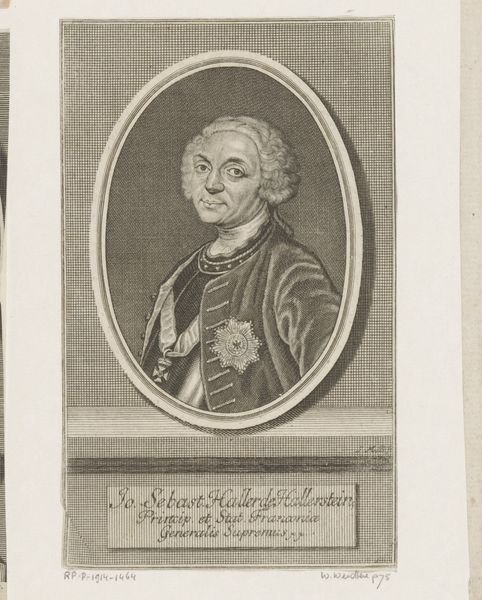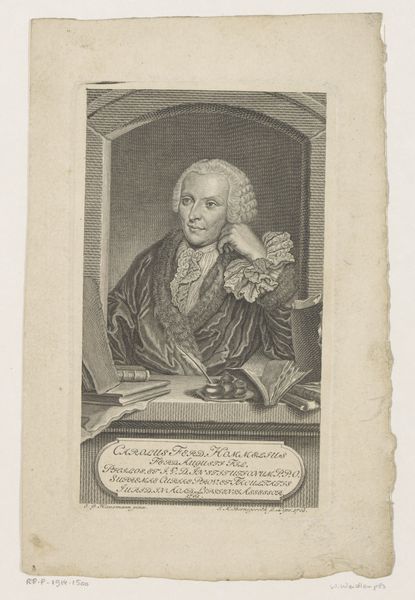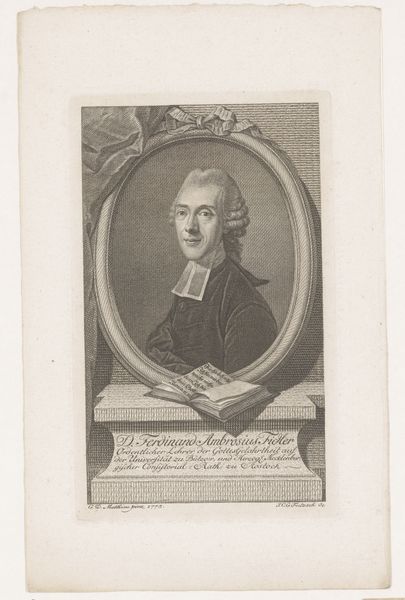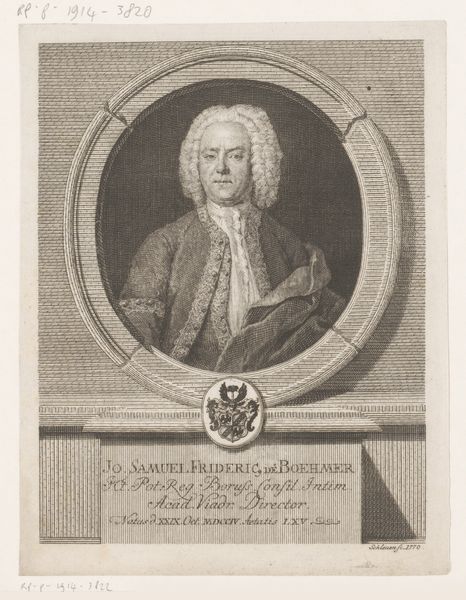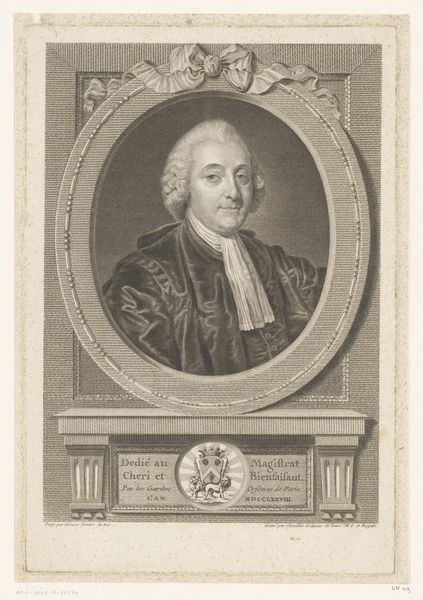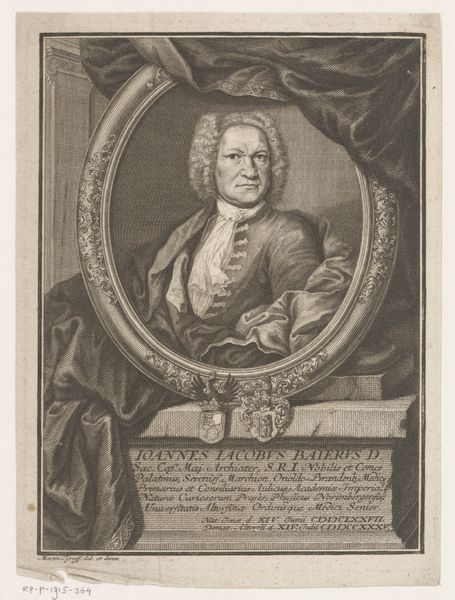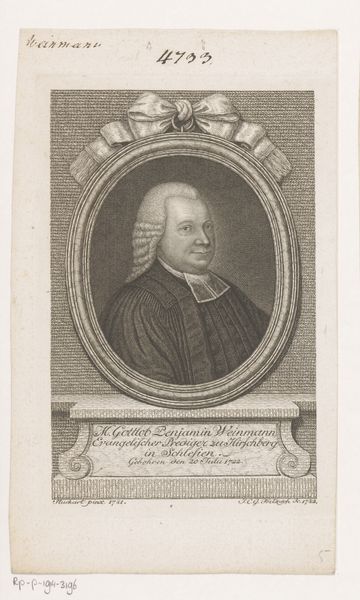
print, engraving
#
portrait
#
baroque
# print
#
history-painting
#
engraving
Dimensions: height 151 mm, width 96 mm
Copyright: Rijks Museum: Open Domain
This is Johann Martin Bernigeroth’s portrait of Albert Georg Schwarz, a print made in the 18th century, here at the Rijksmuseum. Bernigeroth was a master of engraving, a demanding process that used a tool called a burin to carve lines directly into a copper plate. The ink would then be applied, and wiped away, remaining only in the incised lines. This printmaking technique, which relies on sharp precision, differs from more painterly approaches like etching. Note the linear quality of the image, which lends a crisp formality to the portrait. Bernigeroth was well-versed in this skilled tradition, which has its own rich history distinct from painting. But, beyond aesthetics, this print also speaks to broader social issues of labor and consumption. Consider the sheer amount of work involved in creating this image. The level of detail that Bernigeroth has etched into the printing plate, and the intellectual labor of capturing Schwarz's likeness and social standing. Paying attention to materials, making, and context helps us fully understand the meaning of this print, challenging traditional distinctions between fine art and craft.
Comments
No comments
Be the first to comment and join the conversation on the ultimate creative platform.

